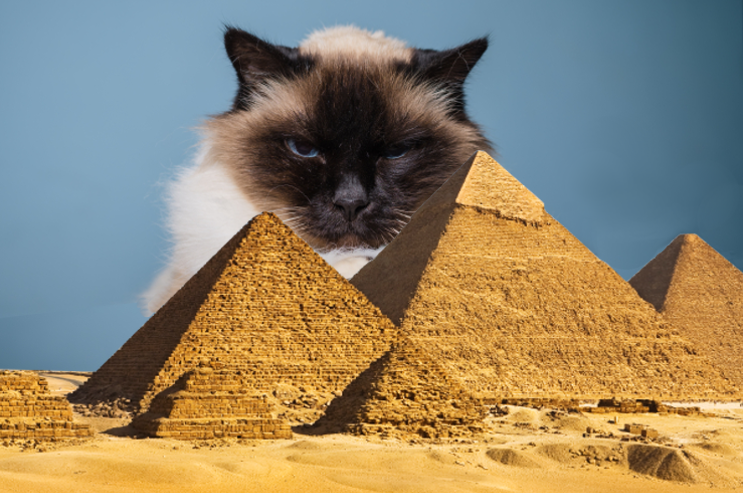It’s peony season, that rare time of year I attempt to display flowers in the house. It quickly backslides into an episode of ‘Cold Case Files’ – you know, the one where the bewildered small-town detective attempts to solve the puzzle of which cat decapitated, ingested and finally regurgitated the once-gorgeous blooms all over my living room floor?
The resolution to this episode finds me mopping up flower-carcass-hairballs and reminding myself that it’s in their nature to eradicate all foreign invaders from our living space (even decorative ones, sadly). But I must ask – does having four paws and flopping over for belly rubs (not on command, mind you) disqualify my boys from straight up decency, or am I just a big SUCKER? Well, don’t answer so fast, because I looked into the annals of history and discovered that we cat worshippers are not alone. In fact, we’re in great company!
Cats of Ancient Egypt Rise to Power
The domesticated feline is indigenous to Egypt, having been introduced from Persia around 2000 B.C. to protect their grain storage from snake, mice and rat issues (and you thought that ant problem was bad). What began as a symbiotic relationship quickly turned into one of great respect and soon – worship. Egyptian cats, all referred to as Miu (or Miut) were not only considered skilled predators, but fortunate; if you saw a cat in your dreams you were promised a good harvest.
You know how you would do ANYTHING for your fuzzy bubs? Well, Egyptian pharaohs were the ultimate crazy cat people (and I say that with respect). Cats in Ancient Egypt were highly respected – linked to gods and goddesses and often considered demi-gods in their own right. They were invited indoors, encouraged to breed and lived alongside their beloved pharaohs.
Due to their god-like status, cats could only be owned by pharaohs and were under their guardianship. Harming a cat was considered treason and exporting cats to other countries was illegal. Forget Helen of Troy, Egyptian armies were dispatched to rescue kidnapped felines and bring them back to Egypt. They were the first to be rescued in a fire and protected on a battlefield (in case mouser took a wrong turn and ended up in the middle of a little skirmish).
Losing a feline family member is never easy, and it wasn’t for these cat-worshippers either. When it came time to say goodbye to their cat, Egyptians went through a period of extreme mourning, which included shaving their eyebrows. They mummified their cats and buried them with dead mice, milk and food in one of many massive tombs, some of which included eighty thousand cat burials.
One might wonder if the Egyptians’ domestication and subsequent worship of cats contributed to the humanoid-indifferent, highly judgmental furballs deigning to live with us today. The only obedience training going on is that of me learning how to work around their various cornucopias of destruction. Since the peony debacle I’ve discovered flower sconces – a simple way to indulge my love of fresh flowers without coming home to a surefire crime scene. They will eventually find a way to climb the walls, which will ironically make them more endearing. But like the Egyptian pharaohs, I find myself blessed to have them around.







Have you heard of an Egyptian Smoke cat. They are born without tails. Any information you may have would be great.